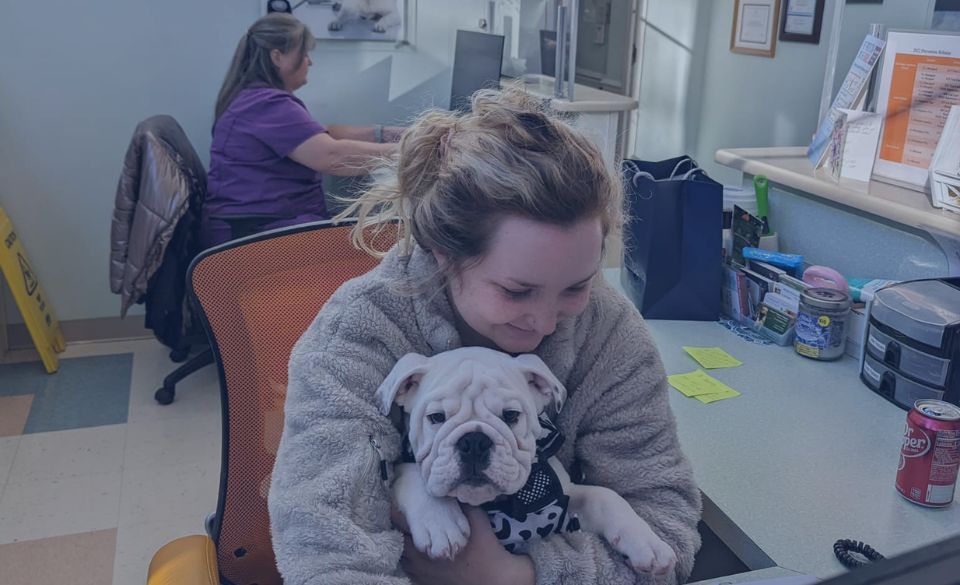I am looking for some advice on how to handle excessively long phone conversations. Today I was on the phone with a potential client who had a bad experience at her previous vet. She continued talking extensively about it as I created a new record for her in the system.
After some time, I needed to return to the topic of setting her up for her first appointment, but I did not know how to redirect the conversation without cutting her off or making her feel uneasy. She just kept going on and on about her previous vet and how upset she is with them. It was a tricky conversation to navigate without rushing the caller or making her feel as though I did not care about her situation, but she just kept venting! She was very friendly and appreciative during the call, but I don’t want to get caught in this scenario again. I look forward to hearing your advice or tips on navigating this type of phone call.
Sincerely, B.
Hey B.,
Can you hear the collective groans from your fellow CSRs who’ve undoubtedly encountered a longwinded caller at some point in their career? I know I have, and I think many of us just accept it and let the rambler ramble, because like you, we don’t want to seem unkind. I have no doubt that you handled this call to the best of your ability in the moment, but I also know it can be especially frustrating if it’s a busy day and other clients are waiting. Let’s get into some tips for how to wrangle a rambler.
Step One: Activate Your Empathy
Trust me on this one. Tapping into your empathy will truly help you arrive at the best approach with your particular rambler. In the case of B.’s caller, they were still processing unresolved feelings about what they went through with their pet. Maybe your rambler is a bit isolated and doesn’t have much social interaction, such as a senior citizen. While we can’t know for sure what’s happening on the other end, we may be able to pick up on some cues to guide our next step. Even though you may feel frustrated in the moment, take two seconds to put yourself in the caller’s shoes. They will sense that you’re listening and that this is a conversation, not a transaction.
Step Two: Tactfully Interrupt With An “I Hear You” Statement
Validating the caller’s experience helps to establish trust, which is important with all clients, but especially so for new clients or ones who’ve had bad experiences elsewhere. This is also your opportunity to subtly redirect the conversation back to the initial topic. The best part about using an “I Hear You” statement in this way is that it doesn’t feel like an interruption.
Examples for B.’s rambler:
“It sounds like what you went through was very stressful.”
“I can understand why that experience would lead you to find a new vet.”
“That sounds very upsetting and I’m so sorry that that happened to you.”
See those underlined words above? That’s the foundation of the “I Hear You” statement. It’s smart to have a few of them in your repertoire because they can be used in any situation where the other person truly needs to feel heard, such as an upset client or a misunderstood coworker. In this case, it’s our foot in the door to wrangle our rambler. (Pro Tip: If creativity isn’t your strong suit, the words “I hear you” will work just fine.)
Step Three: Use Reflective Listening
Now that you’ve lassoed the rambler with your “I Hear You” statement, it’s time to take the reins. You’re going to use a skill called Reflective Listening, which is simply summarizing the caller’s statements back to them. (I love this skill for everything from taking patient histories to receiving feedback during my performance review.) Let’s use Reflective Listening with a few different kinds of ramblers.
“It’s great that you called us today, because I know that you will really like Dr.____ and that you will have a much more positive experience here. Do you mind if I take a few minutes to collect your information for our records?”
“Kudos to you for advocating for your pet, especially after everything that happened. Let’s finish getting you into our system and schedule this first appointment so you can get back to your day.”
These examples are complimentary of the caller’s decision to establish care for you. Who wouldn’t appreciate that? (What are you, a secret marketing genius?) They also tactfully guide the conversation back to the initial goal of the call.
Another common type of rambler is one who gives, shall we say, a comprehensive and detailed history of their pet’s current issue. While it’s true that a doctor or technician would be interested in a list of the pet’s medications, or you would love to hear their pet’s entire adoption story at another time, they may be having some trouble arriving at their point (iykyk). Let’s help them out.
“Pardon me, Mr. ____, I don’t mean to interrupt. I just want to make sure I’m understanding what you have said so far. Your cat, ____, has been vomiting for three days, but he’s still eating normally and you’re wondering if you should bring him in. Do I have that right?”
“Mrs. ____, I must say that your new puppy sounds absolutely adorable. You did mention that you saw some blood in his stool this morning, so I’d like to look at the schedule now and see if we can get you in.”
Now, what if you have followed the steps of 1) Activating Your Empathy, 2) Using An “I Hear You” Statement, and 3) Using Reflective Listening, and you’re still feeling stuck on a seemingly aimless call? Don’t worry. I’ve got one more little trick up my sleeve, and it is surprisingly simple…
When All Else Fails, Place The Rambler On A Brief Hold.
Yep! You’re going to place the caller on hold using professional hold etiquette: address them by name, ask permission, and wait for them to respond; when you return to the line, thank them for holding and get down to business. Placing your rambler on a brief (1-1.5 minute) hold will do the following things:
- It gives you a few seconds to take a deep breath, which you should definitely do if you feel yourself growing impatient. You can also mentally recap the call and decide where and how to redirect things next.
- You can check in with coworkers and let them know you’ll be wrapping up soon (if they’ve been giving you the side-eye), as well as any clients who may be waiting.
- It allows the caller to collect their thoughts while they wait. They may still need some gentle redirection once you resume the call. But being placed politely on hold is a friendly signal that they aren’t the only client who needs and deserves your attention.
If you are someone who feels awkward about interrupting (don’t worry, it’s a skill you can work on!), here are some examples of how this might go:
“Excuse me Mr/s. _____, I’m so sorry to interrupt, but would you mind holding while I check out another pet owner? Thanks so much, I will be right back.”
[…] “Thank you so much for holding, Mr/s. _____, now let’s get you into our system so we can schedule ____’s appointment.”
“Mr/s. _____, I hate to interrupt you, but I have a client waiting to be checked out. May I place you on hold for just a couple of minutes? Thank you, I’ll only be a moment.”
[…] “Hi Mr/s _____, thanks so much for waiting! Just to pick up where we left off, I’m going to get some basic information from you so I can create your record here, and then we’ll be all set.”
Congratulations, you are now ready to wrangle your next rambler with three new tools: Empathy, “I Hear You,” and Reflective Listening. I think you’ll find these tactics useful in lots of other situations, too. Let me know how it goes!




